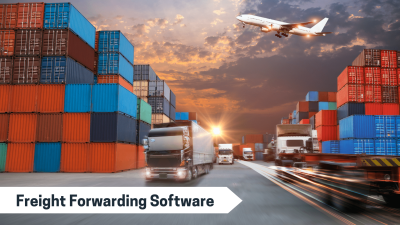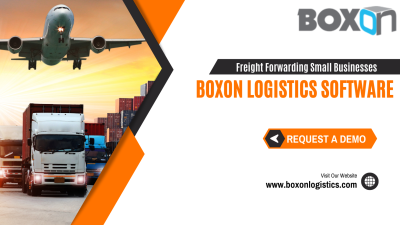Global shipping had a tough financial year in 2016, especially for Ocean Freight. However, this industry has seen quite some downfall since 2009 due to low rates and overcapacity. And it doesn’t seem like it’s going to change in 2017. China for example has seen some growth in the past few years but it’s become stagnant recently, regardless of future growth predictions. Since such a shipping powerhouse is seeing an economic slowdown the demand for far East shipments are also slowing down. With such an impact of global shipping from one trend, we wanted to see what other trends could affect this industry in 2017.
Global Shipping Trends in 2017
-
Adopting the Containerization Method
The Logistics & Transportation industries are following their own cargo to container method that goes alongside the Containerization method. This is a method of shipping freight in relatively uniform, sealed, movable containers without having to unload the contents at each point of transfer. For instance, paper companies are adjusting paper rolls to fit into containers and transporting them directly from the mill to the consignee or customer. Therefore, reducing the risk of damages & increasing efficiency.
Also, containerized cargo demand is increasing in new regions like Nigeria in Africa. With a population of 174 million expected to increase to 440 million by 2050, supply and demand of commodities also increase. These kind of changes will result in additional cargo growth.
-
Impact of Big Data
The Global Shipping industry is starting to take advantage of Big Data technology for better market and pricing analysis. Shipping data and big data analytics such as AIS (Automated Identification System), satellites keeping track of shipment movements, help decision-makers consider the best trade route selection based on weather conditions, fuel consumption and piracy risk. As well as integrate data with information such as bills of lading to give shipping strategists a clearer understanding of how trade routes evolve over time.
Get a better idea about business technology mitigating risks by reading about Business Intelligence in Supply Chain Management.
-
Lifting Sanctions Against Iran
The EU and USA lifted sanctions against Iran following the verification by the International Atomic Energy Agency (IAEA) on January 16, 2016. Iran agreed to nuclear-related measures stated in the Joint Comprehensive Plan of Action (JCPOA). This decision will add about 500 million barrels of oil into the global supply. This should further depress already weak oil prices. As well as inflate the demand for oil, gas and petroleum products, thereby helping global shipping overall.
-
The Commodity Super Cycle
According to IHS, although ‘lower prices will spur more oil consumption in the short term, the overall global oil demand is expected to grow about 0.6% per year all the way through to 2040’. These predictions are based on the link between economic growth and a weakening oil demand due to adopted alternatives to hydrocarbon fuels and vehicle fuel efficiency enhancements.
Prices for coal, iron ore and crude oil are also likely to remain low due to a worldwide economic slowdown. Additionally, the upcoming slow growth of the next 5 to 10 years means depressed rates for shipping, particularly dry bulk shipping.
-
Twenty-Foot Equivalent Units (TEUs)
We are expected to see about one million TEUs being delivered in 2017. This is way beyond the estimated one million TEUs that are currently idle. However, its uncertain if vessel scrapping will increase in 2017, compared to about 600,000 TEUs in 2016.
-
Consolidations
It seems like three alliances will dominate 2017 by controlling more than 90% of the Trans-Pacific trade and 96% of the Asia-European trade. The Alliance, 2M+Hyundai and Ocean Alliance are the front runners for now. But carrier consolidation might change that in 2017 with a possible new carrier in the transpacific trade.
-
Increased Bunker Prices
With OPEC and non-OPEC members collectively curbing oil, bunker prices will most likely increase in 2017. This affects ocean carriers because it will cause rates to rise since bunker is their main operation expense.
-
Aging Workforce
As numerous employees in the shipping industry are getting old its difficult to replace senior and experienced staff members with young & less experienced workers. In Japan, about half of the workforce makes up the 50-60 age group. That’s quite a difficult age group to replace. The main solution is using digital technology systems to help younger employees improve their skills. As well as keep up with the latest global shipping industry standards.
-
Technology Implementation
The Global Shipping industry saw some serious ups and downs at the global economic-political level in 2016. However, the above trends will most likely make a positive impact in 2017. Industry experts will not only make serious decisions to mitigate existing problems plaguing the shipping industry. They will also work together at a global level to fuel economic growth for both the shipping and cargo industry.
Trend foresight can give industries a way to further strategize technology implementation to achieve better results every year. That’s definitely a goal for BoxOn Logistics. As a premier logistics software BoxOn clearly understands the need of process automation for effective management of freight operations. With this ideology, BoxOn was designed and developed to fully assist Logistics Companies move on successfully with their business operations.
We have invested years of research into the best solution for Freight Forwarding, PO Box & Fulfillment Companies so they can streamline business tasks and bring about expected results. Feel free to Contact Us or sign up for a FREE DEMO.






COMMENTS